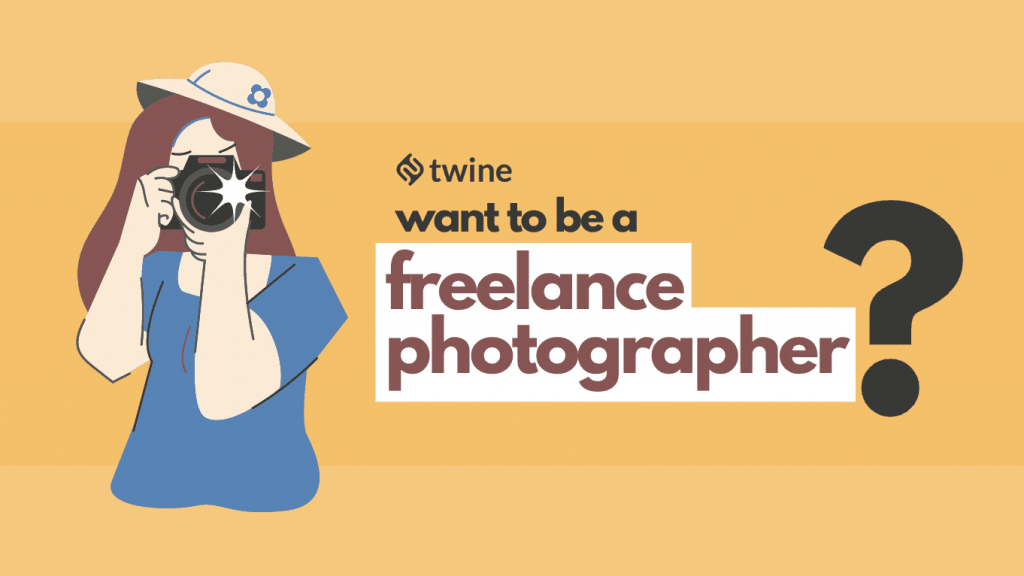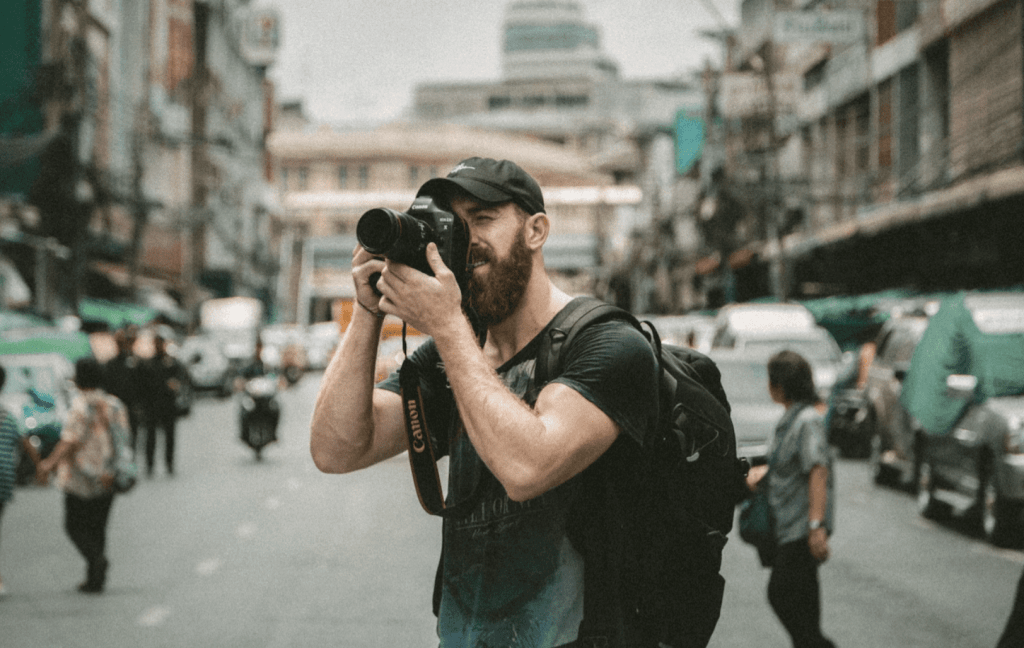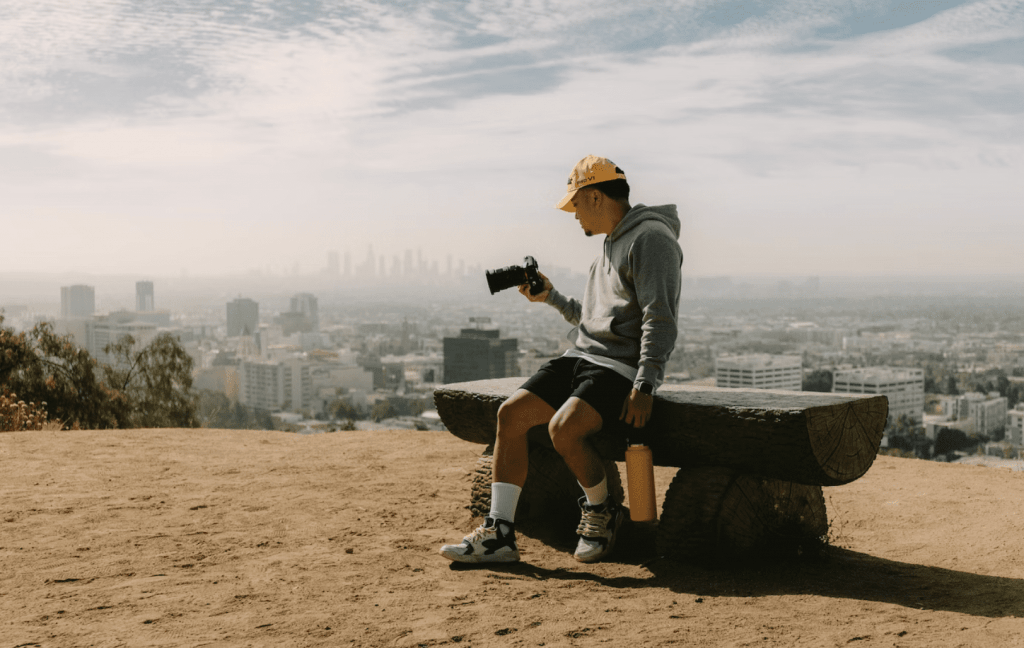
For more Creative Tools, check out the Freelancer Toolkit…
Freelance photography is one of the most flexible and rewarding careers in today’s job market. It not only gives you flexibility and control over your schedule, but you also have complete freedom to choose your projects. For a freelance photographer, working for themselves and having control over their schedule is the ultimate dream.
This might be why many creatives are currently attracted to freelance careers. For instance, research shows that employment for photographers is expected to grow by approximately 9% by 2031.
But although it’s exciting, the first few steps can be overwhelming. Starting a successful career in freelance photography can be tricky without a good plan. The start might be full of long hours, little pay, loneliness, and a lack of stability.
You need strong determination, dedication, and, most importantly, a concrete plan to succeed. In this guide, we will share 10 pro tips for becoming a freelance photographer and making a successful career out of it.
Are you an aspiring photographer looking for your first gig? Browse these projects…
What Is a Freelance Photographer?

A freelance photographer is a self-employed person who conducts clients’ photoshoots or creates and sells photos. In other words, a freelance photographer is a self-employed individual who manages their own photography business. It can be in any category, including:
- Travel photography
- Landscape photography
- Commercial photography
- Wedding photography
- Fine-art photography
- Portraits
As a freelance photographer, you are like a one-person company. Typically, you will rely on your skills to carry out all the day-to-day business tasks. You would market your business, book in clients, fulfill clients’ photography requirements, and carry out the business admin work all by yourself. You will be the boss, the marketer, the photographer, and the errand boy all at the same time.
But this also allows you to be in complete control of your schedule and your time. If you’re creative, like being independent, and have an entrepreneurial streak, being a freelance photographer will be an exciting journey for you.
10 Tips To Get You Started on a Successful Freelance Photographer Career

Making a career out of your photography skills will take time and effort. You must follow several specific rules if you want to set a strong foundation for your freelance photography business.
Here are the 10 essential steps you MUST follow to ensure that your business takes off quickly.
1. Sharpen your photography skills
The first thing you need to know before you get into freelance photography is that learning never stops. Even the best photographers out there are constantly learning and improving their skills. Understanding the basics and owning the right equipment doesn’t make you a good photographer; practice, experience, and skill do.
You should always aim to improve your composition, editing, post-processing techniques, creativity, and more. For example, anyone can set up a camera and click the button, but only a skilled photographer can figure out the right place, the right angle, and the perfect lighting.
Take an online course or two if a specific skill needs more sharpening. Need to learn how to best take the perfect long-exposure photos? Invest time and effort into learning the skill. Want to be the best newborn photographer in a certain region? Then commit to learning all the styles and compositional techniques of newborn photography.
Invest in courses. Read books and articles about the type of photography that interests you. You can also find and work together with the best photographers in your chosen niche. In other words, put your all into learning and improving your skills daily.
To win your dream clients and retain them, you need to have the right skills and experience.
2. Acquire the right equipment

In addition to honing your skill, your equipment can make or break your freelance photography business. Owning the right equipment will help you take high-quality images for your clients.
But we understand that not every new freelance photographer has the budget to buy expensive cameras and gear. If you don’t have the money to purchase top-class equipment, don’t worry. Many retailers sell excellent quality refurbished cameras and other equipment at a fraction of the cost. This equipment can be a great way to start your career and keep it going.
The equipment you need will depend on your specialization and type of work. To know what you need, consider the following:
- Will you be studio based or moving around?
- Are you a high-risk or a low-risk photographer? (for example, shooting a football match is riskier than shooting a birthday party)
- Do you shoot dynamic or static events?
Depending on your needs, you will need to have equipment such as:
- A camera
- Lenses
- Lighting tools
- Tripod
- Photo editing software
- Printer
- Access to a studio
With these, you will be able to offer the best quality service to your clients. However, don’t worry if you can’t afford any of these yet. You can still start your freelance career with what you have at hand.
For instance, you can start learning how to be a successful photographer using your camera phone — some smartphones produce better quality photos than professional cameras. This is also an excellent way to learn the best cameras and equipment to buy when you’re ready to purchase.
3. Develop a focus and style
There are thousands of freelance photographers out there, so why should a client choose you? It will be hard to stand out as a freelance photographer if your work is the same as every other photographer down the street. To stand out, you must offer your clients a unique value.
Although it might be hard with all the noise on Instagram and other social media, you must develop a personal style for your work to stand out. Your work needs to have something people will remember you for. For example, some clients like realistic photos, while others like ephemeral and supernatural vibes.
Make your portfolio as narrow and focused as possible. A clear focus and style will help you stand out as an expert. For example, if your focus is marine photography, you will instantly pop into their minds when a client is looking for this service.
4. Set up a website

In the digital world where everybody is constantly on their phones, potential clients will search for your website before buying your services. You need a professional website to showcase your work and skills as a new freelance photographer. This will help your potential clients to take you more seriously.
Ensure that the website clearly communicates your services and reflects your aesthetic in every way possible. Consider your primary goals as a photographer and create a website to reflect them. This is an excellent way to create and emphasize a solid and recognizable brand as a freelance photographer.
Also, ensure you start a blog for your business and update it as often as possible (preferably daily) to get the word out and stand well with the Google algorithm.
Many freelance photographers forget about taking photos for their portfolio once they start a business and focus solely on getting jobs and doing them well. A blog will encourage you to keep shooting the things you love, which is a great way to grow your skills and maintain momentum.
5. Build a good portfolio and set your media kit
A portfolio is simply a collection of your best photos. A strong portfolio is what will attract and win you your ideal clients. Potential clients will want to see samples of your previous work to decide whether you’re what they need.
You should do some free projects to build your portfolio when starting out. For example, if you’re a travel photographer, you might need to take a few trips and take photos for your portfolio. You can host the portfolio on your website, social media, and any other channel you prefer.
As the saying goes, photographers are as good as their worst photos. So when creating your portfolio, don’t throw in every photo you take. Ensure that all the images in your portfolio are of high quality. If you don’t have enough, create some. Seek out volunteers or aspiring models and use the materials for your portfolio. You can also ask family and friends to volunteer.
Also, remember that clients will be looking for samples in specific niches. So, if you work in more than one niche, categorize your portfolio into specific niches so clients can quickly peruse and see if you’re a good fit for their needs.
And don’t forget to prepare a media kit with a story of your working experience. A media kit is a document summarizing your experience, skills, and the best work samples. It’s more of a pitch deck that tells potential clients why they should hire you.
6. Design your pricing strategy

Your pricing criteria will define your success or failure in freelance photography. It’s crucial to have a firm pricing structure early, so you can always have clarity when pitching to your prospective clients.
Before setting the prices, remember that photography is much more than just snapping pictures. It comprises other things such as materials, travel, admin work, and, more importantly, all the time spent editing and dealing with client feedback. So your prices should be able to reflect that.
The best way to get started is to research the industry to see the reasonable prices for each service. Depending on the services you offer, you can decide whether or not you want to display your prices on your website.
Also, ensure that you have figured out all your financial and tax requirements, including the new changes to 1099-K reporting, so you can easily get started with your tax returns at the end of the financial year.
7. Promote your business
Diligently marketing your business will increase your visibility and make your presence known in the industry. And you don’t have to spend a fortune to do that. Simply sharing your content on social media is a great way to get the word out. So create professional social media accounts and share your work regularly.
Create & share. Rinse & repeat. You never know what photo or post will resonate with your audience and bring you your next big client. To maximize your chances, you should constantly create and share content over and over.
You should also learn SEO so you can optimize your website to gain organic traffic from Google searches. When your website ranks well on Google, clients using the search engine can find your website and purchase your services.
As a freelance photographer, ensure that you nurture and grow relationships with people within and outside the photography industry. Networking is a great way to make your business visible. When networking, ensure you come across as professional, competent, and great to work with during every interaction. This will make you memorable and easier to recommend to other people.
8. Start working with clients

As a photographer, your job is to fulfill your client’s requirements. Aim to exceed their expectations if you want to retain them and have them bring in more clients to your business.
Before coming to you, a typical client has a clear vision of the kind of image they want to get. Listen to them. This shows that you care and trust their judgment, which will make them happy to work with you. You can offer guidance and recommendations but don’t make them feel like you’re overriding their judgment.
If the shot they visualize isn’t the best, work with the client to come up with a better suggestion. The idea is to work together with the client and not against them.
Each client will be unique in their own way. As a freelance photographer, you are expected to:
- Be an expert in dealing with different types of clients
- Handle equipment expertly (use different lenses and filters for different situations)
- Know the right angles and lighting scenarios
- Have an in-depth understanding of the fundamental laws of photography
- Have top-shelf editing skills and be conversant with various professional editing software like Lightroom
9. Create a schedule
As a freelance photographer, having a detailed schedule for your photography business is crucial. It ensures that you have everything organized and reduces the chances of missing important deadlines.
It might not be an issue at first because you will only have a few clients, but as your business grows, it will be useful to maintain a detailed calendar and keep track of every small detail. Here are some tips you can follow to ensure maximum productivity:
- Prioritize
- Create a routine and stick to the plan
- Practice time blocking
- Practice the Pomodoro technique
- Use a good schedule management tool
- Allow for buffer time
10. Making money as a freelance photographer

Don’t limit yourself – you can make more money if you diversify your photography income sources. This way, you can cover yourself against any uncertainties (the world is unpredictable) and increase your earning potential. Here are some of the most popular ways to make money with photography:
- Editorial photography. You can sell images to magazines and newspapers to accompany articles about a certain subject. For example, photos of sunsets are excellent for weather and climate articles.
- Stock photography. This involves licensing images through sites or rights management companies and selling them to people looking for digital images.
- Commercial photography. You can also sell your images to brands for marketing and advertising purposes. These could be photos of the company products or photos of random things like bridges, scenery, etc.
- Creating online tutorials. If you enjoy teaching, you can create a course or directly teach people photography online. This way, you can share your knowledge and earn money simultaneously.
- Affiliate marketing. If you have a sizable following, you can earn a decent amount through affiliate marketing by recommending your favorite gear to your audience.
- Leading photography workshops. Similarly to creating online tutorials, you can earn a decent income by holding online or in-person photography workshops.
Final words
Success is relative. How you define your success in your new photography career will depend on you as a person. For some people, winning a few individual clients in a month is the ultimate definition of success. For others, only working for the top magazines in the industry will do.
Whichever way you define success, the tips above will help you get started and get your business off the ground and off to a good start.
Want to be recognized as an expert in your field? At Twine, we have dozens of top-quality jobs being posted each and every day. There is a job waiting for your skills in everything from design to marketing, development, and copywriting. Join the marketplace of diverse creative talent here.



